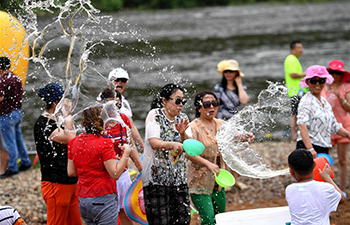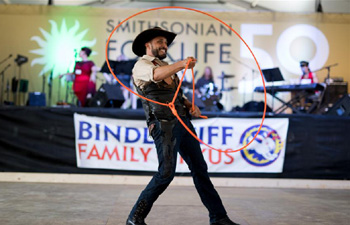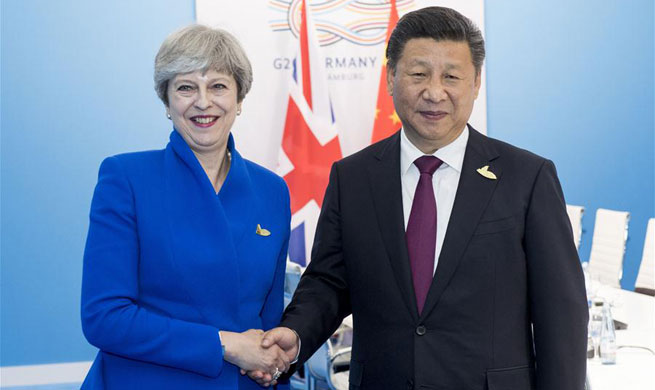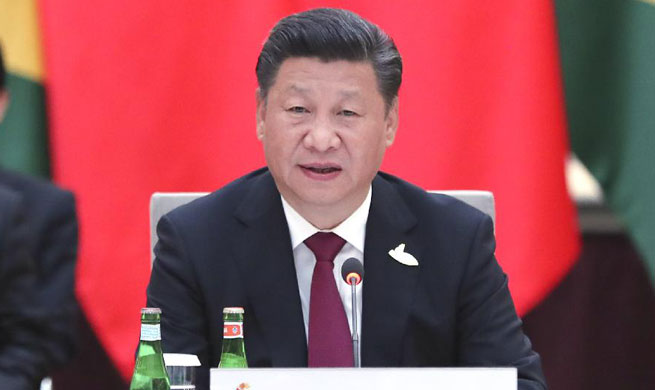JINAN, July 8 (Xinhua) -- Police forensic artist Lin Yuhui thought he had had his fifteen minutes of fame last year when he demonstrated his skills on a popular TV show.
Lin, 59, a policeman and forensic artist in eastern China's Shandong Province, generated interest again this week, when he produced the sketch of the suspect in the disapperance of visiting Chinese scholar Zhang Yingying in the United States last month, after an unofficial request.
The case is a major concern in both China and the United States, and Lin has been interested from the start.
As the father of a former overseas student, just like any other parent, he is concerned about the safety of children studying abroad.
But Lin did not become involved until he was called by Liu Shiquan, a visiting legal scholar in the United States, on June 17. Liu sent Lin the security video of the place where Zhang was last seen and asked him to try to sketch the suspect.
"I had no reason to refuse," Lin said, though he had never drawn a foreign suspect before.
The process was hard because the footage captured by security cameras was very dark. The suspect's face was backlit and partly hidden by a car.
"The footage was very obscure. I could only see the figure and had to build up his facial image in my mind," he said.
Lin started drawing with the suspect's eyes. He does not make drafts, and when drawing, he feels as if his hands almost moves automatically.
"I felt that he was quite stout with a short beard and square face," he said.
Despite of the poor quality of the footage, Lin created two images of the suspect after several days. He then sent his work to the U.S. police via Liu.
The portraits drawn by Lin were very similar to the suspect arrested by the U.S. police on June 30, according to the U.S. lawyer Wang Zhidong, who has been giving pro bono legal support to the Zhang family.
After the photo of the suspect and Lin's work appeared on the Internet, many marveled at the similarities, but Lin told Xinhua that U.S. police had detained the suspect before his pictures arrived.
"The arrest was made mainly based on the phone records of the suspect," he said. "My picture may help them confirm his identity."
Forensic portraits are useful in tracking down criminals, but they are only one of the many criminal investigation techniques, according to Lin.
Lin will retire next year, and has only been drawing forensic sketches for 14 years.
When he was young, he was an editor of a local police magazine. He started to work in the criminal investigation bureau in 2004. He learned about forensic artists from a news report and became addicted to the work.
"My grandpa taught how to draw and I have enjoyed drawing since my childhood," he said.
At that time, the department did not have a sketch artist. Lin volunteered and was approved. Lacking any professional training, he resorted to sketching people on the streets. He worked in railway stations and other public places. Children or old people, white or black, anyone could be his model.
In the first three years, Lin did not participate in any investigations but kept practicing, drawing for over 10 hours each day.
He still remembers his first case in 2008. There were no witnesses or video footage of an arson attack on a wedding planning company in Tai'an city, Shandong. One person was killed in the fire, Lin recalled.
"An attendant at a nearby gas station told police that he sold petrol to a young man on the day before the fire. The station attendant described the suspect's facial details," Lin said.
Based on the description -- square face; small eyes; long, fashionable hair -- he drew five pictures. The attendant immediately picked two as very similar to the suspect's appearance.
Police soon identified the suspect as a former employee of the wedding planner.
Since then, Lin has been involved in nearly 1,000 cases.
"A forensic portrait is quite different from a portrait by an artist," Lin said. "An artist can copy the image of a person or exaggerate it, while a forensic artist has to sketch the main facial features of a suspect using whatever information is available."
Lin believes that China's forensic portraits are at nearly the same level as those of developed countries. Although security cameras have become common in public places, many cases without witnesses or clear surveillance images still occur. Forensic artists can play a crucial role in such cases, Lin said.
Being one of the best in China, Lin has been admitted to the International Association for Identification, the world's oldest and largest forensic association. He hopes to contribute to international cooperation in criminal investigations in the future.
















